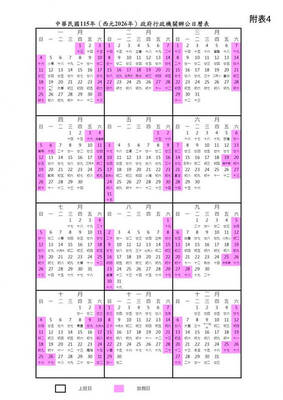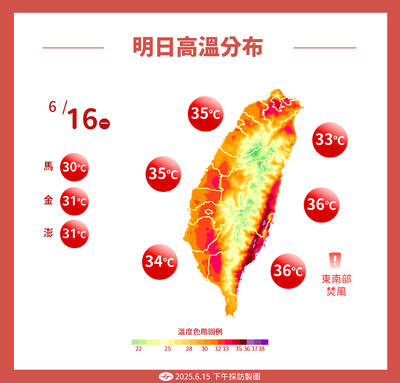National Cheng Kung University (NCKU) researchers’ latest invention, of aluminum bonding wires used in semiconductor packaging, is poised to revolutionize the industry by providing a cheaper alternative to gold, silver and copper, materials science professors Hung Fei-yi (洪飛義) and Lui Truan-sheng (呂傳勝) said.
Due to their superior conductivity and ductility, gold, silver or copper bond wires are used to make the ball bonds that connect 90 percent of the world’s LED and IC semiconductor devices to their casing or frames, the researchers said.
However, the high prices those metals command make mass production expensive, with gold valued at about NT$2 million (US$61,862) per kilogram, silver at NT$40,000 per kilogram and copper at the much lower, but still pricey, NT$220 per kilogram, they said.
In contrast, aluminum trades at about NT$60 per kilogram, and its use in semiconductors could greatly reduce production costs if scientists could overcome the material’s naturally low conductivity and strength, they said.
They have worked on making aluminum wires that could be used in ball wire bonding for the past four years and have finally solved the problem, they said.
The aluminum wires Hung and Lui’s team made are 1.8 micrometers thick, heat-treated for improved strength and elasticity, and crucially, they have been plated with zinc using nanotechnology, which provides the final product with the necessary wire-bonding qualities.
The professors credited two of their students, master’s degree candidate Chu Kuan-ming (朱冠銘) and doctoral candidate Tseng Yi-wei (曾軼葦), with realizing that the zinc electroplating on the wires was responsible for their failure to assume the proper ball shape during the bonding process.
When subsequent analysis confirmed that the students were correct by showing that the electroplating method had led to unwanted formation of oxidized zinc on the wire surface, the team replaced the process with nanoplating, which perfected the bonding wire, Hui and Lui said.
The researchers said that the government had issued a patent for their aluminum bond wire and that they have also applied for a patent in China.
The also said that they expect to publish their research in July.

Taiwan is to have nine extended holidays next year, led by a nine-day Lunar New Year break, the Cabinet announced yesterday. The nine-day Lunar New Year holiday next year matches the length of this year’s holiday, which featured six extended holidays. The increase in extended holidays is due to the Act on the Implementation of Commemorative and Festival Holidays (紀念日及節日實施條例), which was passed early last month with support from the opposition Chinese Nationalist Party (KMT) and Taiwan People’s Party. Under the new act, the day before Lunar New Year’s Eve is also a national holiday, and Labor Day would no longer be limited

COMMITMENTS: The company had a relatively low renewable ratio at 56 percent and did not have any goal to achieve 100 percent renewable energy, the report said Pegatron Corp ranked the lowest among five major final assembly suppliers in progressing toward Apple Inc’s commitment to be 100 percent carbon neutral by 2030, a Greenpeace East Asia report said yesterday. While Apple has set the goal of using 100 percent renewable energy across its entire business, supply chain and product lifecycle by 2030, carbon emissions from electronics manufacturing are rising globally due to increased energy consumption, it said. Given that carbon emissions from its supply chain accounted for more than half of its total emissions last year, Greenpeace East Asia evaluated the green transition performance of Apple’s five largest final

Taiwan is to extend its visa-waiver program for Philippine passport holders for another year, starting on Aug. 1, Minister of Foreign Affairs Lin Chia-lung (林佳龍) said on Friday. Lin made the announcement during a reception in Taipei marking the 127th anniversary of Philippine independence and the 50th anniversary of the establishment of the Manila Economic and Cultural Office (MECO) in Taiwan, the Ministry of Foreign Affairs said. The decision reflected Taiwan’s commitment to deepening exchanges with the Philippines, the statement cited Lin as saying, adding that it was a key partner under the New Southbound Policy launched in 2016. Lin also expressed hope

Temperatures in New Taipei City’s Sindian District (新店) climbed past 37°C yesterday, as the Central Weather Administration (CWA) issued heat alerts for 16 municipalities, warning the public of intense heat expected across Taiwan. The hottest location in Taiwan was in Sindian, where the mercury reached 37.5°C at about 2pm, according to CWA data. Taipei’s Shilin District (士林) recorded a temperature of 37.4°C at noon, Taitung County’s Jinfeng Township (金峰) at 12:50 pm logged a temperature of 37.4°C and Miaoli County’s Toufen Township (頭份) reached 36.7°C at 11:40am, the CWA said. The weather agency yesterday issued a yellow level information notice for Taipei, New